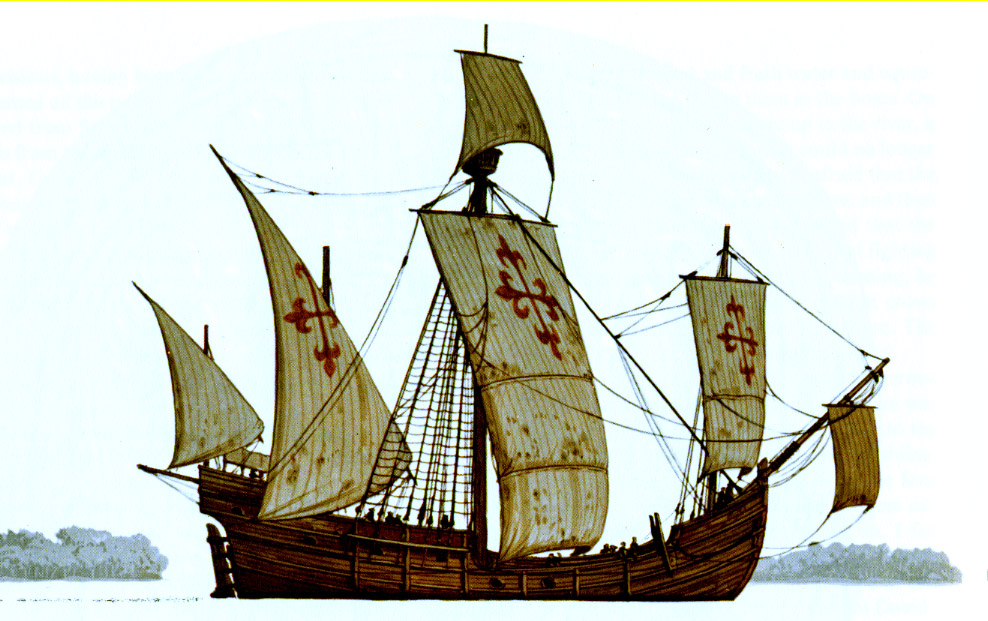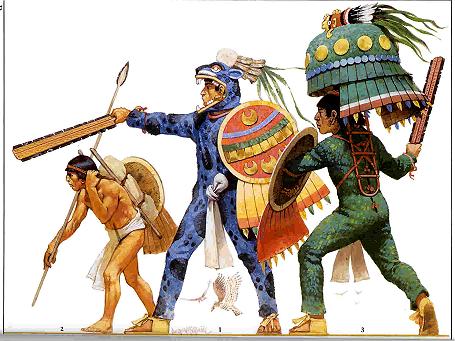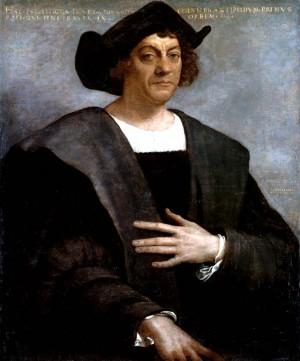Exploration And Colonization Of America: Quiz!
(222).jpg)
Christopher Columbus is seen as the navigator who discovered North America. His discovery led to more people coming into the Americas and trying to get a piece of it for themselves. This test assesses your knowledge of the European exploration and colonization of the Americas. Do you think you have what it takes to pass it? Give it a shot and get to find out!
- 1.
Which 3 major European countries explored and colonized the Americas?
- A.
England, France, and Portugal
- B.
England, France, and Spain
- C.
France, Portugal, and Spain
Correct Answer
B. England, France, and SpainExplanation
During the Age of Exploration, England, France, and Spain were the three major European countries that explored and colonized the Americas. England established colonies along the eastern coast of North America, including Jamestown and Plymouth. France colonized areas in present-day Canada, such as Quebec and Montreal, as well as parts of the Mississippi River Valley. Spain, on the other hand, had the most extensive colonization efforts in the Americas, establishing colonies throughout Central and South America, including present-day Mexico, Peru, and Florida. These three countries played a significant role in the colonization and exploration of the Americas.Rate this question:
-
- 2.
Exploration means:
- A.
A journey made for a special purpose.
- B.
The science of determining a ship’s location and direction.
- C.
To travel for the purpose of discovery.
Correct Answer
C. To travel for the purpose of discovery.Explanation
The correct answer is "to travel for the purpose of discovery." Exploration refers to the act of traveling in order to discover or uncover new things, whether it be new lands, new knowledge, or new experiences. It involves venturing into the unknown with the intention of expanding one's understanding or finding something previously unknown. This definition aligns with the idea of exploration as a journey made for the purpose of discovery.Rate this question:
-
- 3.
Why did the Spanish explore the Americas?
- A.
To find gold and riches.
- B.
To discover more land.
- C.
To spread Christianity.
- D.
All of the above
- E.
None of the above
Correct Answer
D. All of the aboveExplanation
The Spanish explored the Americas for multiple reasons. Firstly, they were motivated by the desire to find gold and riches, as they believed that the Americas held vast reserves of precious metals. Secondly, they wanted to discover more land and expand their empire, establishing colonies and claiming territories. Lastly, the Spanish were driven by religious motives, seeking to spread Christianity to the indigenous populations of the Americas. Therefore, the correct answer is "all of the above."Rate this question:
-
- 4.
A settlement far away from the country that rules it is called
- A.
A caravel.
- B.
A colony.
- C.
An expedition.
Correct Answer
B. A colony.Explanation
A settlement far away from the country that rules it is called a colony. A colony is a territory or community that is established and governed by a country in a distant location. It is typically inhabited by people from the ruling country who settle there permanently or temporarily to exploit resources, establish trade, or expand their influence. Colonies were often established during the era of exploration and colonization when European powers sought to establish overseas territories for economic, political, and strategic purposes.Rate this question:
-
- 5.
What object appears in the image below?
- A.
A caravel
- B.
A colony
- C.
A conquistador
Correct Answer
A. A caravelExplanation
The correct answer is a caravel. A caravel is a type of small, highly maneuverable sailing ship that was used by explorers during the Age of Discovery. It was a popular choice for long-distance travel and exploration due to its versatility and ability to navigate both shallow and deep waters. The image likely shows a depiction or representation of a caravel, which is why it is the correct answer.Rate this question:
-
- 6.
Using the picture on the left answer the following question. Where did these animals come from?
- A.
The Americas
- B.
Africa
- C.
Europe
Correct Answer
C. EuropeExplanation
The correct answer is Europe. This can be inferred from the fact that the picture on the left shows animals like deer, rabbits, and squirrels, which are commonly found in Europe. Additionally, the other options of Africa and the Americas do not align with the animals shown in the picture.Rate this question:
-
- 7.
A Spanish conqueror who first came to the Americas in the 1500s is called a:
- A.
Conquistador.
- B.
Indentured servant.
- C.
Missionary.
Correct Answer
A. Conquistador.Explanation
During the 1500s, the Spanish explorers who came to the Americas were known as conquistadors. They were responsible for the conquest and colonization of various regions in the Americas, particularly in Central and South America. These conquistadors sought to expand the Spanish Empire, acquire wealth, and spread Christianity. They played a significant role in shaping the history and culture of the Americas during this time period.Rate this question:
-
- 8.
Who is pictured in the image below?
- A.
Aztec warriors
- B.
French soldiers
- C.
Spanish conquistadors
Correct Answer
A. Aztec warriorsExplanation
The image below likely depicts Aztec warriors because the Aztecs were a prominent indigenous group in ancient Mexico known for their fierce warriors. The attire and weapons shown in the image align with historical accounts of Aztec warriors, such as their distinctive feathered headdresses and obsidian-bladed weapons. French soldiers and Spanish conquistadors would have had different styles of clothing and weaponry, making them unlikely candidates for the image.Rate this question:
-
- 9.
A missionary is:
- A.
A person who investigates unknown regions or areas.
- B.
A person who teaches his or her religion to people of different beliefs.
- C.
A shop owner.
Correct Answer
B. A person who teaches his or her religion to people of different beliefs.Explanation
The correct answer is "a person who teaches his or her religion to people of different beliefs." A missionary is someone who spreads their religious beliefs to individuals who may have different beliefs or may not be familiar with their religion. They typically engage in evangelism and aim to convert others to their faith through teaching, preaching, and providing spiritual guidance. Unlike the other options, which are unrelated to religion, this answer accurately describes the role and purpose of a missionary.Rate this question:
-
- 10.
How did the Spanish colonies affect the Americas?
- A.
The Spanish built new buildings.
- B.
The Spanish spread their language and religion.
- C.
The natives were used as slaves.
- D.
All of the above
Correct Answer
D. All of the aboveExplanation
The Spanish colonies had a significant impact on the Americas in various ways. Firstly, they built new buildings, which contributed to the architectural development of the region. Secondly, the Spanish spread their language and religion, leading to cultural assimilation and the dominance of Spanish culture in many areas. Lastly, the natives were often used as slaves, resulting in the exploitation and mistreatment of indigenous populations. Therefore, all of the options mentioned - building construction, language and religion spread, and native enslavement - are accurate in describing the effects of Spanish colonies on the Americas.Rate this question:
-
- 11.
The practice of people owning other people and forcing them to work is...
- A.
A colony.
- B.
Missionary.
- C.
Slavery.
Correct Answer
C. Slavery.Explanation
The correct answer is "slavery." Slavery refers to the practice of people owning other individuals and forcing them to work against their will. It involves the exploitation and control of individuals as property, denying them their basic human rights and freedom. This practice has been prevalent throughout history, with enslaved individuals being used for various purposes such as labor, agriculture, and domestic work. Slavery has been widely condemned and abolished in many countries, but it still exists in some forms today.Rate this question:
-
- 12.
An expedition is:
- A.
A journey made for a special purpose.
- B.
A settlement far away from the country that rules it.
- C.
To travel for the purpose of discovery.
Correct Answer
A. A journey made for a special purpose.Explanation
An expedition refers to a journey made for a special purpose. It implies that individuals or a group of people embark on a trip with a specific objective in mind, such as scientific research, exploration, or adventure. Unlike a settlement or traveling for discovery, an expedition emphasizes the intentionality and purpose behind the journey, rather than the destination or outcome.Rate this question:
-
- 13.
A German mapmaker named America in honor of...
- A.
Amerigo Vespucci.
- B.
Christopher Columbus.
- C.
Henry Hudson.
- D.
Ferdinand Magellan.
Correct Answer
A. Amerigo Vespucci.Explanation
Amerigo Vespucci is the correct answer because he was an Italian explorer who made several voyages to the Americas. He was the first to recognize that the lands discovered by Christopher Columbus were part of a new continent, separate from Asia. The name "America" was derived from his Latinized name "Americus Vespucius" and was first used on a map in 1507 by the German mapmaker Martin Waldseemüller. This decision was made to honor Vespucci's contributions to the understanding of the New World.Rate this question:
-
- 14.
A fast sailing ship that could be easily steered and hold large amounts of cargo is...
- A.
A caravel.
- B.
A colony.
- C.
A missionary.
Correct Answer
A. A caravel.Explanation
A caravel is a type of fast sailing ship that was commonly used during the Age of Exploration. It was known for its maneuverability and ability to hold large amounts of cargo. Caravels were designed with a combination of square and lateen sails, which allowed them to sail efficiently against the wind. These ships played a crucial role in the exploration and trade routes of the 15th and 16th centuries, making them the correct answer to the question.Rate this question:
-
- 15.
The English and French traveled to North America to find better items to trade, more land, and riches.
- A.
True
- B.
False
Correct Answer
A. TrueExplanation
The statement is true because during the 16th and 17th centuries, both the English and the French explored North America in search of valuable resources, new trade routes, and opportunities for colonization. They hoped to find items such as furs, timber, and precious metals that could be traded for profit. Additionally, they sought to expand their territories and establish colonies to increase their wealth and power. Therefore, it is accurate to say that the English and French traveled to North America for better trade items, more land, and riches.Rate this question:
-
- 16.
Christopher Columbus was an Italian explorer who discovered an island in the Caribbean and accidentally found a new landmass (the Americas).
- A.
True
- B.
False
Correct Answer
A. TrueExplanation
Christopher Columbus was indeed an Italian explorer who is widely credited with discovering an island in the Caribbean. However, it is important to note that he did not actually "discover" the Americas, as there were already indigenous people living there. Nevertheless, his voyages did lead to increased European exploration and colonization of the Americas, which had significant historical and cultural impacts. Therefore, the statement is true in the sense that Columbus's expeditions did result in the "discovery" of the Americas by Europeans.Rate this question:
-
- 17.
Which of the following defines the Columbian Exchange?
- A.
Changing sugarcane into sugar to sell for a huge profit.
- B.
Sharing riches from one land t o another in the Western hemisphere.
- C.
Moving people and their way of life between the Eastern and Western Hemisphere.
- D.
Using missionaries to convert Indians to Christianity in the Eastern Hemisphere.
Correct Answer
C. Moving people and their way of life between the Eastern and Western HemispHere.Explanation
The Columbian Exchange refers to the widespread transfer of plants, animals, culture, human populations, technology, and ideas between the Eastern and Western Hemispheres following the voyages of Christopher Columbus in 1492. This answer accurately captures the essence of the Columbian Exchange, as it involves the movement of both people and their way of life between the two hemispheres.Rate this question:
-
- 18.
The Columbian Exchange was the trading of goods from the West (the Americas) and the East (Asia).
- A.
True
- B.
False
Correct Answer
B. FalseExplanation
The statement is false because the Columbian Exchange refers to the exchange of goods, ideas, and diseases between the Americas and Europe, Africa, and Asia. It was initiated by Christopher Columbus' voyages to the Americas in the late 15th century. This exchange had a significant impact on the world, as it led to the transfer of crops, animals, and diseases between the two continents, ultimately shaping the modern global economy and society.Rate this question:
-
- 19.
How did Columbus's voyages impact the Americas?
- A.
Explorers and settlers abandoned their plans to colonize the West Indies.
- B.
The Indians returned to Asia with Columbus.
- C.
Columbus showed Europeans the way to the Americas.
- D.
The Indians showed the Europeans how to breed stronger horses.
Correct Answer
C. Columbus showed Europeans the way to the Americas.Explanation
Columbus showed Europeans the way to the Americas. This is evident from the fact that Columbus's voyages opened up a new route for Europeans to reach the Americas. Prior to his expeditions, Europeans were unaware of the existence of the Americas and had no knowledge of how to navigate to these lands. Columbus's voyages not only led to the discovery of new lands but also sparked a wave of exploration and colonization by Europeans in the Americas.Rate this question:
-
- 20.
Which BEST describes the factors that enabled Cortes to defeat the Aztecs?
- A.
Metal armor, muskets, horses, and allies.
- B.
Stone weapons, muskets, and allies.
- C.
Larger forces, better weapons, and horses.
- D.
Disease, allies, and more men.
Correct Answer
A. Metal armor, muskets, horses, and allies.Explanation
Cortes was able to defeat the Aztecs due to several factors. The introduction of metal armor provided better protection for his soldiers, giving them an advantage in battle. Muskets, a more advanced weapon compared to the stone weapons of the Aztecs, allowed Cortes' forces to inflict greater damage. Horses played a crucial role in warfare, providing mobility and intimidation. Lastly, Cortes formed alliances with indigenous groups who were enemies of the Aztecs, which increased his forces and weakened the Aztec empire. These combined factors ultimately enabled Cortes to achieve victory.Rate this question:
-
- 21.
To convert is the capture or taking of something by force.
- A.
True
- B.
False
Correct Answer
B. FalseExplanation
The given statement is incorrect. "To convert" does not mean the capture or taking of something by force. The word "convert" means to change or transform something into a different form or use. It does not involve force or capture.Rate this question:
-
- 22.
A plantation is a settlement far from the country that rules it.
- A.
True
- B.
False
Correct Answer
B. FalseExplanation
A plantation is not a settlement far from the country that rules it. A plantation refers to a large agricultural estate, typically in a tropical or subtropical region, where crops such as cotton, sugar, or tobacco are grown. It is usually owned by a single individual or company and often relies on slave or indentured labor. Plantations are typically located within the country that governs them, rather than being far away from it. Therefore, the statement is false.Rate this question:
-
- 23.
An encomienda is a legal system established by Spain, which regulates Indian labor and rewards conquerors.
- A.
True
- B.
False
Correct Answer
A. TrueExplanation
The statement is true. The encomienda system was indeed a legal system established by Spain during the colonization of the Americas. Under this system, Spanish conquerors were granted the right to demand labor and tribute from the indigenous peoples in the territories they had conquered. In return, they were expected to protect and Christianize the indigenous population. This system played a significant role in the exploitation and oppression of indigenous peoples during the colonial period.Rate this question:
-
- 24.
Who is this famous explorer who is of Italian nationality?
- A.
Coronado
- B.
Pizarro
- C.
Columbus
- D.
Cortes
Correct Answer
C. ColumbusExplanation
Columbus is the correct answer because he is a famous explorer of Italian nationality. Christopher Columbus, born in Genoa, Italy, is renowned for his voyages across the Atlantic Ocean in the late 15th century. He is credited with discovering the Americas and opening up the New World to European exploration and colonization.Rate this question:
-
Quiz Review Timeline +
Our quizzes are rigorously reviewed, monitored and continuously updated by our expert board to maintain accuracy, relevance, and timeliness.
-
Current Version
-
Mar 21, 2023Quiz Edited by
ProProfs Editorial Team -
Feb 08, 2018Quiz Created by
Angeladent
- African American History Quizzes
- Age Of Exploration Quizzes
- American History Quizzes
- Asian History Quizzes
- Australian History Quizzes
- Chinese History Quizzes
- Colonialism Quizzes
- Elizabethan Era Quizzes
- European History Quizzes
- French Revolution Quizzes
- Georgia History Quizzes
- Gothic Quizzes
- History Midterm Quizzes
- Indian History Quizzes
- Mesopotamia Quizzes
- Middle Ages Quizzes
- Modern History Quizzes
- Philippine History Quizzes
- Renaissance Quizzes
- Revolution Quizzes
- Roman History Quizzes
- Slavery Quizzes
- The Rise Of Hitler Quizzes
- United States Constitution Quizzes
- War Quizzes
- Westward Expansion Quizzes
- World History Quizzes
- World War I Quizzes
- World War II Quizzes
 Back to top
Back to top






